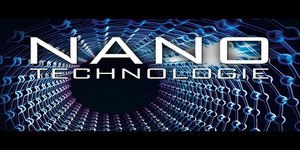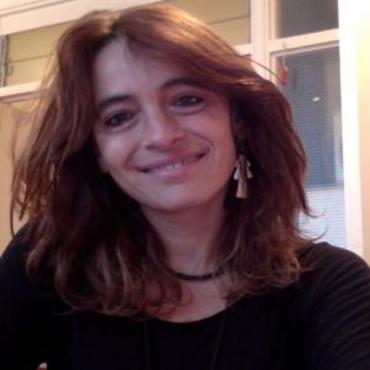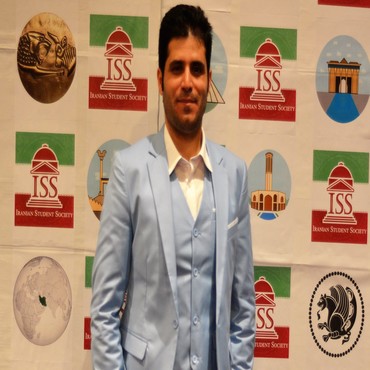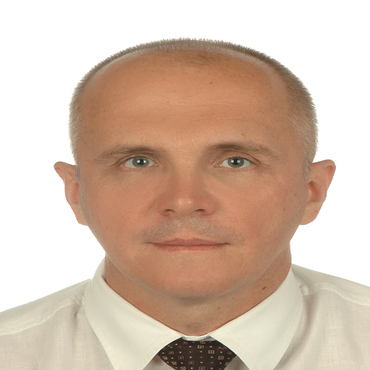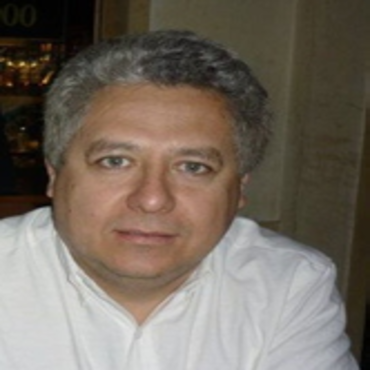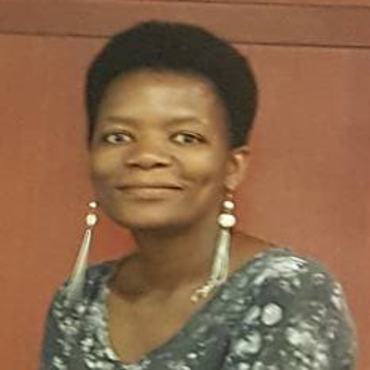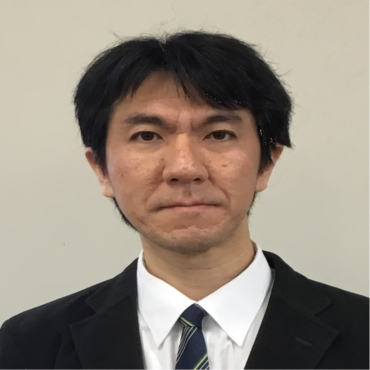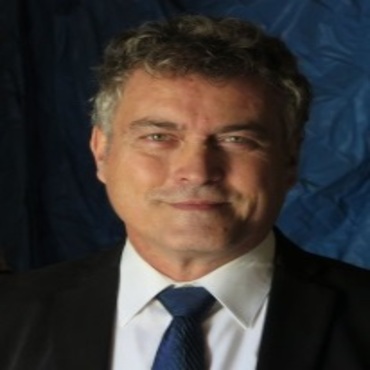Nanotechnology has appeared to be one of the most promising areas of science and technology which has the remarkable potential to fulfil various demands of society by changing almost all spheres of living beings across the globe. While the electronics industry may have been the major driving force in nanotechnology research at the beginning, today the impact on research in medicine and biology is also significant. Hence, nanotechnology has matured largely toward device-focused processes. However, it requires exploring the scope of nanotechnology to cover fundamental research for
Nano-electromechanical, Nano chemical, bio analytical, and medical components. To cope up with these ever increasing applications of Nanotechnology, there is an urgent need to develop clean and simple nanofabrication procedures to generate versatile nanostructures cheaply, efficiently, and reliably.
Related Societies:
Nano Medicine the utilization of innovation to do everything from sedate conveyance to repairing of cells. It is the utilization of minor machines to the treatment and counteractive action of malady. Nanorobots are headways in Nano solution as smaller than normal specialists. These machines help repair harmed cells they duplicate themselves, adjust hereditary inadequacies by supplanting or modifying DNA atoms. For instance fake Antibodies, Antiviral, Nano robots, Counterfeit white and Red Platelets. These Nano Machines could influence the conduct of individual cells. Hormones or Administer sedates as required in individuals with insufficiency states or interminable awkwardness can be understood utilizing embedded
Nanotechnology gadgets.
Related Societies:
Nano Biotechnology is the term that alludes to the crossroads of nanotechnology and science. This teaches helps to demonstrate the combination of natural research with a few fields of nanotechnology. Ideas that are enhanced through Nano science are includes with Nano scale, Nanodevices and Nanoparticles wonders that happen inside the teach of nanotechnology. Becoming new mechanical assemblies, for instance, peptoid Nanosheets, for helpful and regular purposes behind existing is another fundamental objective in
Nanotechnology. New Nano tools are oftentimes made by refining the employments of the Nanoinstruments that are currently being used. The imaging of nearby biomolecules, natural movies, and tissues is furthermore a vital subject for the Nanobiology researchers. Unmistakable subjects concerning
Nanobiology intertwine the utilization of cantilever demonstrate sensors and the usage of Nano photonics for controlling sub-atomic frameworks in living cells.
Related Societies:
Nanotechnology meeting centres around the earth as it is the real worry in this day and age. Green Nanotechnology is the use of nanotechnology to improve the typical sensibility of systems making negative externalities. It is like manner insinuates the use of the consequences of nanotechnology to overhaul practicality. It joins making green Nano-things and using Nano-things with help of supportability.
Green Nanotechnology has been delineated as the change of clean headways, "to restrict potential normal and human prosperity risks related with the manufacture and use of nanotechnology things, and to help to supplant of existing things with new Nano-things that are more naturally neighbourly all through their life-cycle.
Related Societies:
Recent innovations in nanotechnology have changed various logical and mechanical regions including the sustenance business. Utilizations of
Nanotechnology have risen with expanding need of
Nanoparticle utilizes as a part of different fields of sustenance science and nourishment microbiology, including sustenance handling, nourishment bundling, practical sustenance improvement, nourishment wellbeing, recognition of foodborne pathogens, and time span of usability expansion of nourishment and additionally nourishment items. This survey condenses the capability of nanoparticles for their utilizations in the sustenance business keeping in mind the end goal to give purchasers a safe and pollution free nourishment and to guarantee the shopper adequacy of the sustenance with improved utilitarian properties. Parts of use of
Nanotechnology in connection to increments in nourishment sustenance and organoleptic properties of nourishments have additionally been talked about quickly alongside a couple of bits of knowledge on wellbeing issues and administrative worries on Nano-prepared nourishment items.
Related Societies:
Nano Engineering is an interdisciplinary science that makes biochemical structures smaller than the bacterium, which works like moment creation lines. This is possible by utilizing fundamental biochemical systems at the atomic or nuclear level. In clear terms, particles interface through standard methods, and Nano building misuses those systems by arranging control. The consequences of having the ability to control the "improvement" of materials from the atomic level up are gigantic. Nano engineering could incite a lot of dynamic materials and things that would not simply benefit zones like aeronautics, arrangement and development, yet normal everyday presence.
Nano Engineering could affect such significant applications as self-cleaning paint that never foggy spots or needs waxing; planes with skins that de-ice themselves and change in accordance with various streamlined conditions; and more able and cleaner exhausting stimulates.
Related Societies:
Nano Electronics holds few responses for how we may expand the abilities of electronic gadgets when we decrease their weight and power utilization. Nano gadgets and innovation are broadly utilized as a part of all parts of present day life. The expanded utilization of nanoelectronics in carbon nanotube backdrop illuminations, field discharge showcases, and transmission films is relied upon to build the interest for the Nanoelectronics material and hardware advertise amid the gauge time frame. Expanding utilization of
Nano Electronic materials, alongside gear for extraordinary bright lithography, and Nanoimprint is relied upon to lay new market openings in the coming years. Life Wellbeing, Social insurance, Transportation, Processing, Vitality and Broadcast communications are a portion of the real fields profiting from the development of Nano electronic applications.
Related Societies:
Nano Composites are materials that wire Nanosized particles into a network of standard material. The extension of nanoparticles upgrades properties like mechanical quality, durability and electrical or warm conductivity of the material. Significant sorts of Nano composites incorporate carbon Nanotube, Polymer metal fiber, Nanofiber, Graphene, Nanoplatelet and others. These
Nano Composites are currently days generally utilized as a part of use markets, for example, car, aviation and protection, hardware and semiconductor, vitality, development, buyer merchandise, and others. The real driver for this market is upgraded physical, warm and another one of kind properties, which help with accomplishing abnormal state execution crosswise over different applications. The new utilization of nanocomposites in the developing gadgets division is additionally helping this market to develop at a speedier rate. The Worldwide
Nano Composites Market is ready to develop at a CAGR of around 16.3% throughout the following decade to reach roughly $17.2 billion by 2025. This report investigates the worldwide markets for Nanocomposites over all the given portions worldwide and in addition territorial levels displayed in the exploration scope. It presents chronicled showcase information for 2015, 2016 income estimations are exhibited for 2017 and gauges from 2018 till 2025.
Related Societies:
Nano Fabrication has been one of the most important developments in laser processing over the last 10 years. Research in this area is dominated by physicists, but more and more engineers are becoming involved. The drivers for
Nano fabrication research are mainly the demand for laser based technologies in the renewable energy (e.g., solar panels, fuel cells), semiconductor industry (photo-lithography), electronic industry (e.g., display panels), data storage, biomedical (e.g., stents, implants, microfluidics) and photonic/ telecom industries.
The other area of Nano fabrication is the production of
Nano-Materials such as Nano-tubes, Nano wires and Nano-particles. Owing to low efficiency of laser techniques, the Nano-material market is dominated by the wet-chemical, electric-discharge and sol–gel techniques. There is, however, growing development in laser-based Nano-material fabrication.
Related Societies:
Nano Mechanics is a branch of Nano science considering key mechanical (versatile, warm and dynamic) properties of physical structures at the Nanometer scale. A Nano mechanics has made on the intersection purpose of standard mechanics, strong state physical science, honest to goodness mechanics, materials science, and quantum science. Regularly,
Nano Mechanics is seen as a branch of Nanotechnology, i.e., a related zone with an emphasis on the mechanical properties of formed nanostructures and Nanosystems (frameworks with Nanoscale parts of significance). Examples of the last join nanoparticles, Nanopowders, Nanowires, Nanorods, Nanoribbons, Nanotubes, including carbon Nanotubes (CNT) and Boron nitride nanotubes (BNNTs); Nanoshells, Nanomebrnes, Nanocoatings, Nanocomposite/Nanostructured materials, (liquids with scattered nanoparticles); Nanomotors, and so forth.
Nanotechnology gathering offers stage to discuss new advancements in the field of Nano Mechanics.
Related Societies:
Nano Toxicological examinations are utilized to decide if and to what degree these properties may represent a danger to nature and to human wellbeing. However huge numbers of the substances that are the focal point of current
Nano toxicology considers are moderately basic materials that are at the vanguard of another period of complex materials. Throughout the following 50 years, there will be a need to comprehend the toxicology of progressively complex materials that display novel, dynamic and multifaceted usefulness. In the event that the Toxicology Network is to address the difficulty of guaranteeing the sheltered utilization of this new age of substances, it should move past "Nano" toxicology and toward toxicology of advanced materials.
Related Societies:
In the past few years, television programs such as CSI and NCIS have shown that forensics is a highly technical and skilled profession. The advances in forensic technology have principally been driven by progress in analytical techniques. DNA analysis is the most well-known area, although improvements in detection levels of more conventional analysis techniques have also been a factor. However,
Nanotechnology is promising to have a major impact with the latest developments in the identification of latent fingerprints. Latent fingerprints are deposits left by a combination of excretions from the sweat and sebaceous glands in the skin. They are invisible and require the use of optical techniques or, more commonly, development agents such as powders to reveal the print. Materials such as carbon black and aluminium flake have been used as latent fingerprint developers for many years as it was found that they worked well under particular circumstances.
Related Societies:
It is a branch of optics, optical planning, electrical building and nanotechnology. It much of the time incorporates metallic parts, which can transport and focus light by methods for surface Plasmon Polaritons.The articulation "
Nano-Optics", essentially like the articulation "optics", when in doubt implies conditions including splendid, self-evident, and close infrared light (free-space wavelengths from 300 to 1200 Nanometers). Optical Architects and Electrical Designers can share their perspectives in this
Nanotechnology meeting.
Related Societies:
Meetings International takes the pride to welcome you to the
International Conference on Nanotechnology which is going to be held during December 03-04, 2018 at Edinburgh, Scotland. The theme of this conference is”
Interdisciplinary approach for New innovation and Collaboration in Nanotechnology“. This
Nanotechnology conference gathers renowned scientists, physicians, surgeons, young researchers, industrial delegates and talented student communities in the field of Nanotechnology under a single roof where networking and global partnering happens for the acceleration of future research.
Scope and Importance of Nanotechnology:
Nanotechnology is a new sphere of scientific innovation has a broader scope. Several institutes have introduced courses in Nanotechnology. The areas covered in the Nanotech are Food and Beverage, Bio- Technology, Forensic Sciences, Genetics, Space Research, Environment industry, Medicine, Agriculture and Teaching. The three chief divisions of Nanotech are Nanoelectronics, Nanomaterials, and Nano-Biotechnology. The implications of
Nanotechnology can be found in the field of telecommunications, computing, aerospace, solar energy, and environment. However, Nanotech’s major contribution can be seen in the computing, communication and, medical field. As the technology matures, many more uses will be commercialized. MEMS, another branch of technology involving extreme miniaturization, refer to a very exciting field in microelectronics. Specifically, we define MEMS as “Micro Electro Mechanical Systems,” micro-scale structures that transduce signals between electronic and mechanical forms.
Under the largest single share of funding for
Nanotechnology, some EUR 1256 million for the period 2011-2015, comes through the dedicated
Nanosciences, Nanotechnologies, Materials and new Production Technologies stream, but significant support also comes through the Information and Communication Technology stream (EUR 756 million), as well as the Health (EUR 92 million), Energy (EUR 72 million) and Biotechnology streams (EUR 39.5 million). Horizon 2020 promises to capitalise on the research foundations laid and moved into a new phase, where World’s intellectual capital is turned into commercial technologies. The new regime promises to address a widely perceived shortfall in technology transfer and put Europe in a strong position to grasp new opportunities in the commercialization of emerging
Nanotechnologies across a vast array of sector.
Why in Edinburgh?
Nanotechnology Conference 2018 is an international platform for presenting research about marketing, exchanging ideas about it and thus, contributes to the dissemination of knowledge in marketing for the benefit of both the academia and business. Edinburgh has a modern open economy, with GDP in 2017 of £117.5 billion. Edinburgh has a strong and varied industrial base, with strengths in renewable energy, life sciences, financial and business services, food and drink, sustainable tourism, and creative industries. It is also home to many world-class universities - Scotland prides itself on having the highest number of universities in the EU and also the most
Nanotechnology researchers per capita in the UK.
Edinburgh is a designated city and the largest metropolitan area in Scotland. Edinburgh the fastest growing market for nanotechnology, accessible populations and the growing infrastructure for quality conduct of
Nano Medicines makes Edinburgh attractive for global development. And more over Edinburgh tourism attracts more than 8 million people every year from around the world, which has more than 15 world heritage sites. And statistics shows that the highest % of people visiting Edinburgh are not just from them neighbouring countries but also from all around the world, this makes Edinburgh a most preferable destination for the
Nanotechnology Conference.
Nanotechnology Universities Worldwide:
-
University of New South Wales, Australia
-
Flinders University, Australia
-
University of California, Berkeley
-
The Hong Kong University of Science and Technology, China
-
Purdue University, USA
-
The University of North Carolina at Chapel Hill (UNC), USA
-
University of Edinburgh, Scotland
-
University of Virginia, USA
-
University of Michigan, USA
-
Technical University Of Ostrava, Czech Republic
-
Universidad De La Laguna, Spain
-
Sapienza University of Rome, Italy
-
National University of Singapore, Singapore
-
Harvard University, United State
-
University of Oxford, UK
-
University of Cambridge, UK
-
University of Toronto, Canada
-
University of Wollongong, Australia
Market Research on Nanotechnology:
Nanotechnology has been heralded as having the potential to lead to the next industrial revolution. Nanotechnology is one of the top-ranked subjects in the academic and research field. The
Global Nanotechnology Market is expected to grow at a CAGR of around 17% during the forecasted period of 2017-2024. Thus, there lies a great opportunity for industry participants to tap the fast growing market, which would garner huge revenue on the back of commercialization of the technology.
In the latest research study, "Market Global Nanotechnology Outlook 2024", RNCOS' analysts have conducted a segmented research on the
Nanotechnology Industry, and have interpreted the key market trends & developments that clearly highlight the areas offering promising possibilities for industries to boost their growth.
Further, the application section covers the use of
Nanotechnology in electronics, energy, cosmetics, medical, defence, and food and agriculture sectors; while the component section covers the segregation of nanotechnology market into Nanomaterials, Nanotools, and Nanodevices. Additionally, the report covers the country-level analysis of 13 major countries like the US, France, UK, Germany, and Russia among others in terms of R&D, nanotechnology patent analysis, funding and regulations, to provide an in-depth understanding about the investments and recent research & developments done in the field of nanotechnology.
The global market for
Nanotechnology products was valued at $28.9 billion in 2016 and increased to about $31 billion in 2017. This market is expected to reach about $65.2 billion by 2020; a compound annual growth rate (CAGR) of 21.8% from 2016 to 2020.The global market for nanotechnology-enabled printing technology was estimated to total $25 billion in 2013. The market is expected to grow at a projected compound annual growth rate (CAGR) of 21.7% over the next five years to total $41.8 billion by 2020.
Nanotechnology companies Worldwide:
-
IBM Nanoscale science and technology group, USA
-
Institute for Nano electronics and Computing, USA
-
HP Labs Quantum Science Research Group, USA
-
Center for Electron Transport in Molecular Nanostructures, USA
-
Nanotechnology Characterization Lab at the National Cancer Institute, USA
-
Nano Tumor Center, USA
-
MIT Institute for Soldier Nanotechnologies, USA
-
Quantum Communications Victoria (QCV), Australia
-
Naval Research Laboratory Institute for Nano science, USA
-
NASA Ames Center for Nanotechnology, America
-
MIT Space Nanotechnology Laboratory, America
-
Texas Institute of Intelligent Bio-Nano Materials and Structures for Aerospace Vehicles, USA
-
Nanomaterial Suppliers, Brazil
-
Australian National Fabrication Facility (ANFF), Australia
-
Melbourne Centre for Nanofabrication (MCN), Australia
-
Nanofabrication Core Lab, Saudi Arabia
-
GreenFacts – Nanotechnologies, Belgium
Related Nanotechnology Associations Worldwide:
-
Royal Society - Nanotechnology and Nanoscience, UK
-
Russian Society of Scanning Probe Microscopy and Nanotechnologies
-
British Society for Nanomedicine, UK
-
Korea Nano Technology Research Society, South Korea
-
Nanotechnologies for Tomorrow's Society, Belgium
-
Nanotechnology Industries Association, UK
-
European Society for Precision Engineering and Nanotechnology, UK
-
Innovationsallianz Carbon Nanotubes, Germany
-
The International Association of Nanotechnology
-
Czech Nanotechnology Industries Association,Czech Republic
-
American Bar Association Section Nanotechnology Project, USA
References:
http://www.crnano.org/whatis.htm
https://www.nanowerk.com/nanotechnology/introduction/introduction_to_nanotechnology_1.php
http://www.nanotech-now.com
https://en.wikipedia.org/wiki/Nanotechnology
http://www.engineering.com/Ask@/qactid/1/qaqid/481.aspx
http://www.pharmainfo.net/book/emerging-trends-nanotechnology-pharmacy/5future-prospects-nanotechnology-medicine
http://iopscience.iop.org/journal/0957-4484
http://www.etcgroup.org/issues/nanotechnology

